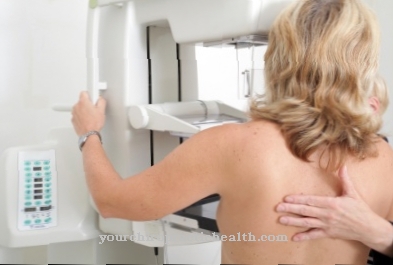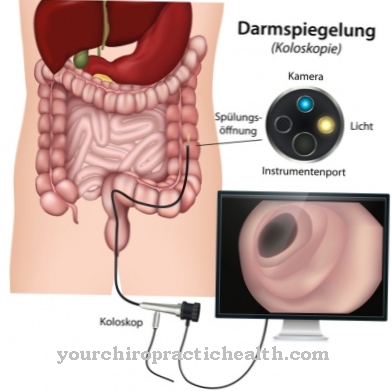To control the intestine, which is sensitive to pathological abnormalities, doctors use the method of Rectoscopy. It is a quick, but useful, study.
What is rectoscopy?

A rectoscopy is a reflection of the rectum. During this procedure, a doctor examines the rectum and, in the course of this, usually also part of the anus. However, this is only a few centimeters. Doctors performing this examination use an endoscope. With this tubular or hose-shaped instrument, they get into the corresponding part of the intestine.
As a rule, this check takes place in a clinic or doctor's office. Before rectoscopy can be started, the patient must be given a laxative. This should be pretty strong. Only in this way is it possible to completely empty the rectum. This, in turn, is very important as remains of the stool could prevent a clear view of the intestinal walls. The laxative effect of the suppository or enema starts after a maximum of half an hour. The preparation time is accordingly short.
Function, effect & goals
During a rectoscopy, doctors insert an approximately 60 cm long endoscope completely into the anus. This is quite flexible and therefore, on the one hand, easier to handle and, on the other hand, a bit more comfortable for the patient to use. In comparison, a rectoscope is static. During the examination, which takes about 5 to 10 minutes, the patient lies either on his back or on his side. If the latter is chosen, this is done from the left.
If the doctor has a rectoscopy table, the person to be examined lies somewhat more comfortably in a knee-elbow position. If the instrument is in the rectum, air is blown into it. This will enlarge the intestine, which will allow the doctor to examine this organ more closely. With this theoretically quite simple procedure, the doctor performing the procedure checks the bowel for unusual changes. Polyps come into focus. These protrusions of the intestinal lining can develop into dangerous colon cancer at a later stage. Recognizing and removing them is therefore particularly important.
This is even possible immediately. Doctors remove the lumps with the help of a sling. In addition to polyps, hemorrhoids can also be detected. They are responsible for uncomfortable stool smear, itching and even bleeding. They can also be removed, but hospitalization may be necessary. Diverticula are other abnormal changes in the bowel that should also be monitored. This for the reason that these so-called pouches can become inflamed. In addition, when the rectum is mirrored, it is important to identify constrictions. They do not cause any major problems at the beginning, but if left untreated, they could in the worst case lead to a blockage of the bowel.
In addition, doctors can detect inflammation of the mucous membrane thanks to a rectoscopy. Finally, it is possible to localize bleeding that has already occurred in the intestine and treat it as quickly as possible. There can even be an enormous loss of blood here. For this reason, doctors should always keep an eye out for any bleeding while performing the rectal flare. If cancer cells and tumors already exist in the intestine, the examination gives doctors the chance to determine the stage and development. Other areas of application are constipation, mucus in the stool and chronic diseases of the intestine.
The goals pursued with rectoscopy are extensive. Many pathological changes, which in the worst case can lead to the death of the patient, are recognized by this control. The relationship between effort and benefit is therefore very good, especially since this examination only takes a little time.
Risks, side effects & dangers
Reflections of the rectum are usually not associated with any serious complications. However, many patients find the procedure uncomfortable. This is partly due to the air blown into the intestine. On the other hand, the instrument also plays a role. The position of the endoscope or rectoscope can cause pain.
However, the air also causes extreme flatulence, which those affected perceive as very uncomfortable. But compared to other studies and their risks, these are side effects that are easy to cope with. Serious incidents only occur very rarely during rectoscopy. These include an injury to the wall of the intestine. This not only results in bleeding, which must be stopped quickly. Peritonitis can also be the result.
But a complete penetration including damage to other organs is also conceivable. Sphincter muscle lesions are just as unsightly. These have far-reaching consequences should incontinence develop. The injured patients can then not control their bowel movements as before, which can be very uncomfortable. Extremely bad, but just as rare are sepsis and complex inflammations. Sepsis should be mentioned here as a generic term.
These diseases arise in the context of unsuccessful rectal mirroring, when germs and pathogens get into the intestine and cannot be combated. Really dangerous complications therefore do not occur in most cases. The really bad consequences, because they are effective in the long term or, in the worst case, fatal, rarely occur. Rectoscopies are therefore among those examinations that can be assessed as low in terms of effort and risk. But their benefit is all the greater.













.jpg)

.jpg)
.jpg)











.jpg)